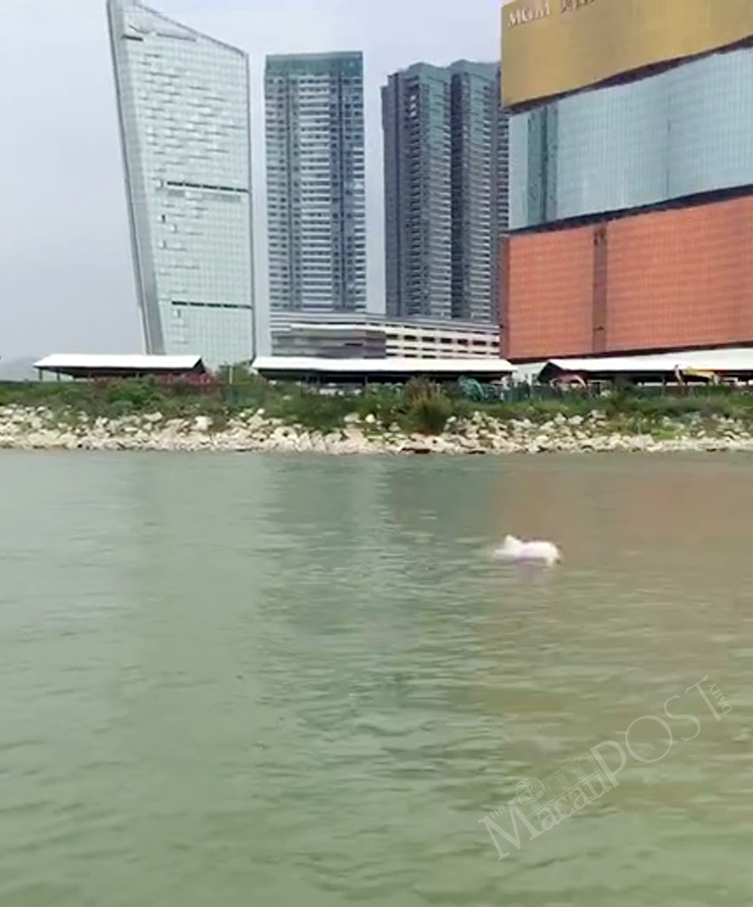The government plans to build a 10-kilometre-long system of elevated walkways across the city, Transport Bureau (DSAT) Director Kelvin Lam Hin San and Secretary for Transport and Public Works Raimundo do Rosário said yesterday.
They made the remarks when briefing lawmakers about the government’s draft of Macau’s land transport master plan for 2021-30. The two-hour presentation session took place at the Legislative Assembly (AL).
Lam said that the land transport master plan aims to meet the needs of the city’s population growth and its transport needs in the future. A public consultation on the drafting of the plan will start today, Lam said.
Lam said that the government is planning to expand the city’s walkway network by building a system of elevated walkways across the city with a total of length of around 10 kilometres, with the aim of “benefitting” around 99,000 pedestrians.
According to Lam, one of the planned elevated walkway systems will be built around Guia Hill (松山), while another one will connect Montanha Russa Park (螺絲山公園) to Areia Preta Park (黑沙環公園), via Avenida do Nordeste (東北大馬路). Lam added that the planned Avenida do Nordeste elevated walkway will also extend to Avenida 1 de Maio (勞動節大馬路) before connecting to a station of the future Light Rail Transit (LRT) East Line.
The government is also planning to build a sea-crossing LRT section connecting the Barrier Gate border checkpoint and the Taipa Ferry Terminal in Pac On via the Zone A and Zone E1 land reclamation areas, officially known as East Line.
Lam underlined that the elevated walkways aim to provide residents with a higher level of walking convenience. Lam also said that the government would study the feasibility of building elevated walkways in the Zone A and Zone B reclamation areas, as well as around Cotai.
Lam said that the government would continue to optimise the city’s system of walkways to provide a safer, more effective, convenient and environmentally-friendly land transportation in Macau.
Rosário acknowledged that the construction of elevated walkways in the peninsula would be difficult because of its narrow roads and streets.
LRT East Line to be ready in 2028
Meanwhile, Lam said he expects the construction of the LRT East Line to be completed in 2028, while three other ongoing LRT projects, namely the Taipa-Barra section, Seac Pai Van section and Macau-Hengqin section, are scheduled to be completed in 2024 and 2025 respectively.
Lam said that after the four new LRT projects are completed, Macau’s LRT network will have reached about 24 kilometres.
Lam predicted that by 2030, daily LRT passenger traffic is expected to increase from an average of 2,880 passengers per day in 2020 to 137,000 passengers per day.
Lam estimated that the total average daily passenger trips in Macau in 2030 will be about 3.02 million per day.
Lam noted that the government estimates Macau’s population to reach 791,000 in 2030. Currently, Macau’s population stands at 649,000.
According to Lam, the government is also planning to build a new LRT line connecting Barra to the Barrier Gate along the peninsula’s western coast, known as LRT West Line.
However, Rosário acknowledged that construction of the LRT West Line would be “very complicated” while the current projects awaiting completion have temporarily overloaded the bureau due to a shortage of human resources, because of which, he said, it would be difficult for the government to come up with a plan for the West Line within the next decade.
Cable Car as tourist attraction
The statement also said that the government was planning to build a cross-sea cable car between the Macau Science Centre in Nape and the Zone A land reclamation area, not as a major means of transport, but as a tourist attraction.
Answering questions from lawmakers, Lam acknowledged that Macau is often affected by typhoons, and that the cable car system’s reliability during a typhoon was unknown.
Lam underlined that the cable car would not be considered a major means of transport between the Macau Science Centre and the Zone A land reclamation area, but as a supplementary transport facility even for residents.
Secretary for Transport and Public Works Raimundo do Rosário (centre) speaks during yesterday’s presentation session about the government’s draft of Macau’s land transport master plan for 2021-30 in the Legislative Assembly (AL), as Transport Bureau (DSAT) Director Kelvin Lam Hin San (left) and Sio Iat Pang, who heads the bureau’s Traffic Planning Division, look on.
Photo: Ginnie Liang






